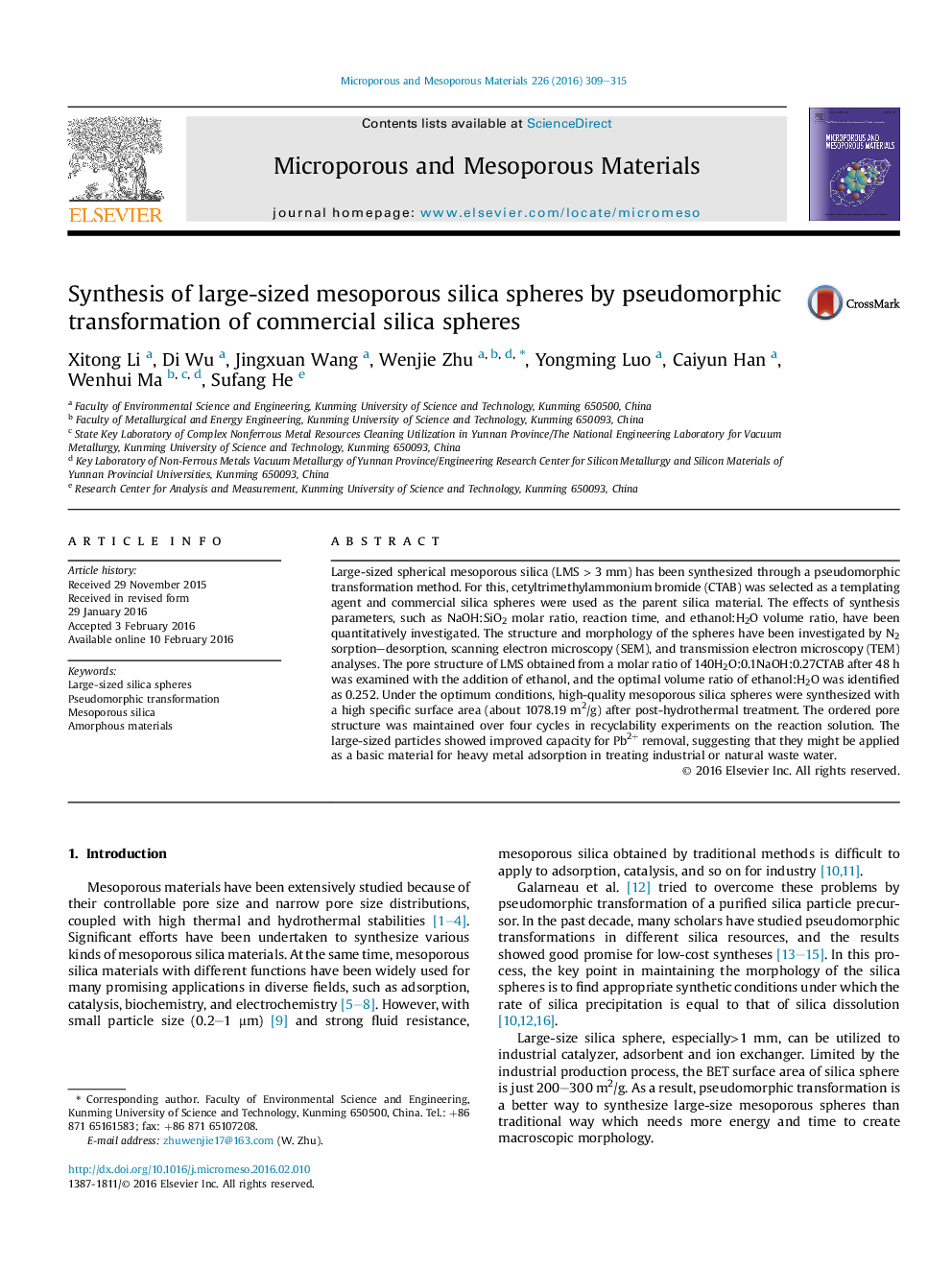| Article ID | Journal | Published Year | Pages | File Type |
|---|---|---|---|---|
| 72200 | Microporous and Mesoporous Materials | 2016 | 7 Pages |
•Large-sized spherical mesoporous silica (LMS > 3 mm) has been synthesized through a pseudomorphic transformation method.•Addition of ethanol control the dissolution–polymerization rates.•Post-hydrothermal treatment is effective in improving the pore structure of LMS without destroying its morphology.•The ordered pore structure was maintained over four cycles in recyclability experiments on the reaction solution.
Large-sized spherical mesoporous silica (LMS > 3 mm) has been synthesized through a pseudomorphic transformation method. For this, cetyltrimethylammonium bromide (CTAB) was selected as a templating agent and commercial silica spheres were used as the parent silica material. The effects of synthesis parameters, such as NaOH:SiO2 molar ratio, reaction time, and ethanol:H2O volume ratio, have been quantitatively investigated. The structure and morphology of the spheres have been investigated by N2 sorption–desorption, scanning electron microscopy (SEM), and transmission electron microscopy (TEM) analyses. The pore structure of LMS obtained from a molar ratio of 140H2O:0.1NaOH:0.27CTAB after 48 h was examined with the addition of ethanol, and the optimal volume ratio of ethanol:H2O was identified as 0.252. Under the optimum conditions, high-quality mesoporous silica spheres were synthesized with a high specific surface area (about 1078.19 m2/g) after post-hydrothermal treatment. The ordered pore structure was maintained over four cycles in recyclability experiments on the reaction solution. The large-sized particles showed improved capacity for Pb2+ removal, suggesting that they might be applied as a basic material for heavy metal adsorption in treating industrial or natural waste water.
Graphical abstractFigure optionsDownload full-size imageDownload as PowerPoint slide
